June 17, 2025 | 21:42 GMT +7
June 17, 2025 | 21:42 GMT +7
Hotline: 0913.378.918
June 17, 2025 | 21:42 GMT +7
Hotline: 0913.378.918
Taking on the responsibility of defending the upstream of Dau Tieng Lake, Tay Ninh province has also committed to afforestation in order to safeguard the headwater basin forest - the existence of the entire region.
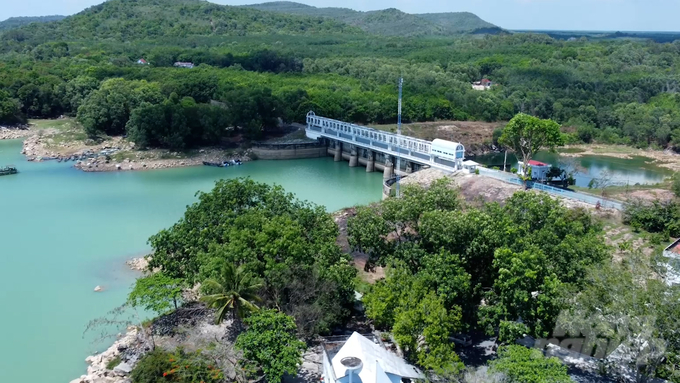
A corner of Dau Tieng Lake, a key national security project. Photo: Tran Trung.
After traveling 100 kilometers, we arrived at Dau Tien Lake. With a total area of 27 km2, Dau Tieng River is one of the largest artificial lakes in Southeast Asia, the focal point of national security construction, and the "water reservation bag" of the entire Southeast region. The lake provides water for agricultural, industrial, and living activities in five provinces and communities, as well as for the prevention and control of flooding, removal of salinity, and improvement of the downstream environment. The magnificent structure is nested in tens of thousands of hectares of verdant forest; from a bird's-eye view, the lake's center appears to be a gigantic water reserve bag enveloped by horizontal green space.
According to the Management Board of Dau Tieng Protection Forest, the most essential duty is protecting Dau Tieng Lake. Specifically, safeguarding the watershed forests of Dau Tieng reservoir is the most essential measure for protecting works, water sources, and the livelihood of the entire region.
The family of Mr. Chu Duc Toan, residing in Hamlet 2, Suoi Ngo Commune, is one of the first households in the Tan Chau district (Tay Ninh) to contract for afforestation. On the 20ha of allocated forest land in Sub-zones 38 and 39 (Suoi Ngo team, Dau Tieng Protection Forest Management Board), his family collects an average of over 200 million VND annually from forest products. Mr. Toan explained that his family's economy has been stable for nearly two decades due to the cultivation of forests.

Officers from the Dau Tieng Protection Forest Management Board patrol the forest. Photo: Tran Trung.
Prior to this, Mr. Toan's family leased land to cultivate cassava and sugarcane, but prices fluctuated during good and poor seasons. Since the execution of the (50-year) afforestation contract, the entire land area has been allocated to the family for the cultivation of hopea, huile de Bois, and rubber trees. From the first to the third year, he intercropped cassava to generate additional income. In the fifth year, the family will begin to receive income from forest trees such as timber, charcoal, rubber latex, etc. planted in the contracted area. Each household is also obligated to protect, maintain, and prevent forest fires, in addition to sowing trees.
Mr. Pham Chi Trung, Director of the Dau Tieng Protection Forest Management Board, stated that the Board has contracted individuals to plant, maintain, and protect over 7,300/20,144 hectares of special-use and protection forests in the province.
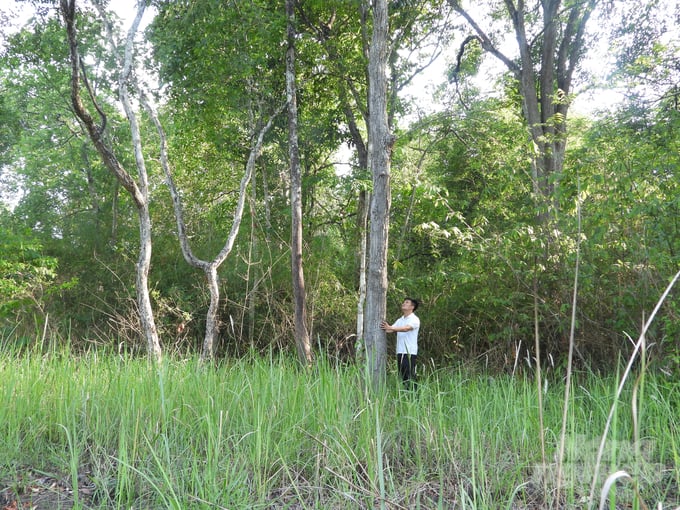
The forest was contracted to be planted, zoned, and protected by Mr. Chu Duc Toan's family (Tan Chau district, Tay Ninh). Photo: Tran Trung.
The Management Board has contracted forest planting on 659ha/308 households in 2022 alone (including more than 202ha/102 households in 2021 and 456ha/206 households in 2022), achieving 132% of the plan. As directed by the Provincial People's Committee, the Management Board will continue to coordinate the planting of an additional 1,000 hectares of forest by 2025.
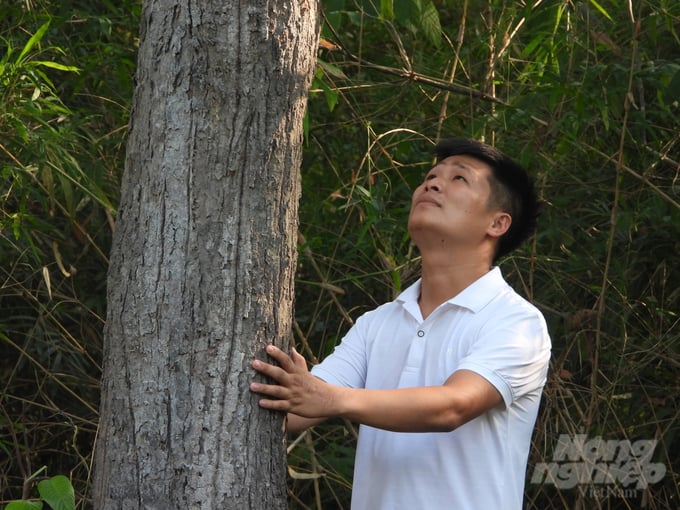
Mr. Chu Duc Toan is next to the forest tree that his family worked hard to cultivate and protect. Photo: Tran Trung.
In the historic days of September, the whole country enthusiastically celebrated Independence Day, and as we crossed the province of Tay Ninh, we noticed a new look of immense green in the forests and urban areas. This is the initial outcome of the Prime Minister's Project "Planting 1 billion trees between 2021 and 2025."
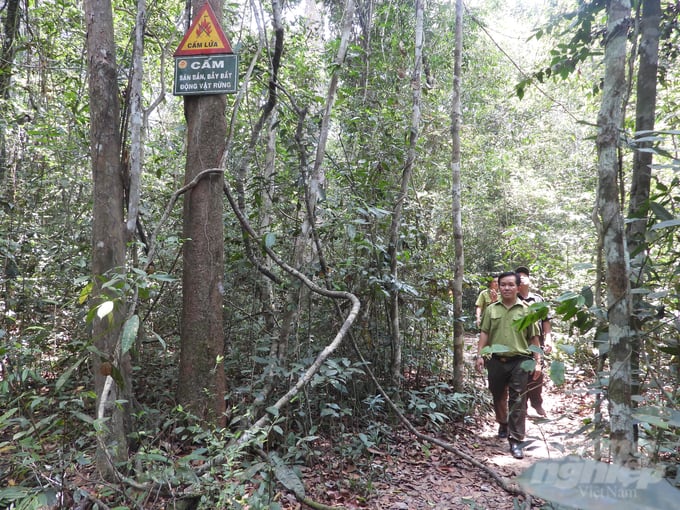
Forests play a huge role in the socio-economic development of the province. Planting, zoning, and protecting forests are considered top tasks. Photo: Tran Trung.
According to Mr. Nguyen Dinh Xuan, Director of the Tay Ninh Department of Agriculture and Rural Development, natural forests in the province of Tay Ninh play a significant role in the socioeconomic development of the province. Forests in Tay Ninh have a high ecological value, prevent soil erosion and runoff, avert flooding, and safeguard watersheds... Mr. Xuan determined that the undertaking was viable.
Tay Ninh province has issued a specific action program to realize the Project. In addition to urban trees, Tay Ninh focuses on planting protective forests, special-use forests, and new production forests to contribute to environmental and ecological protection, improving the landscape and responding to climate change, socio-economic development, enhancing people's quality of life, and sustainable development of Tay Ninh in particular and the nation in general.
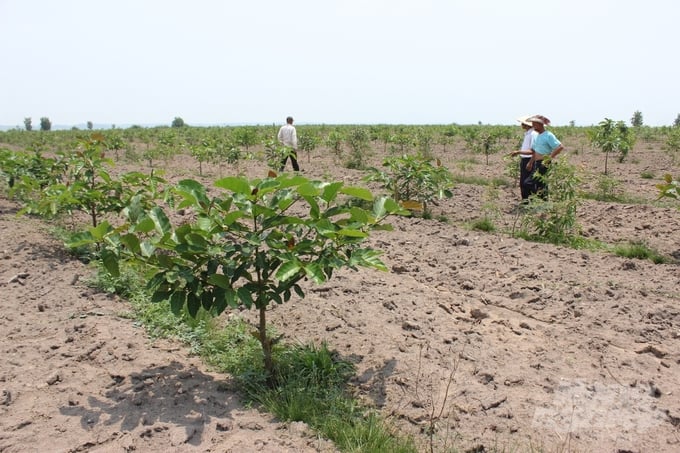
Tay Ninh strives to plant forests on semi-flooded areas and protect Dau Tieng lake bed. Photo: Tran Trung.
Currently, the entire province of Tay Ninh has planted 1,8 million state-funded forest seedlings. In 2022, the province will distribute 244,000 seedlings of various species to organizations, agencies, and private citizens for planting throughout the province.
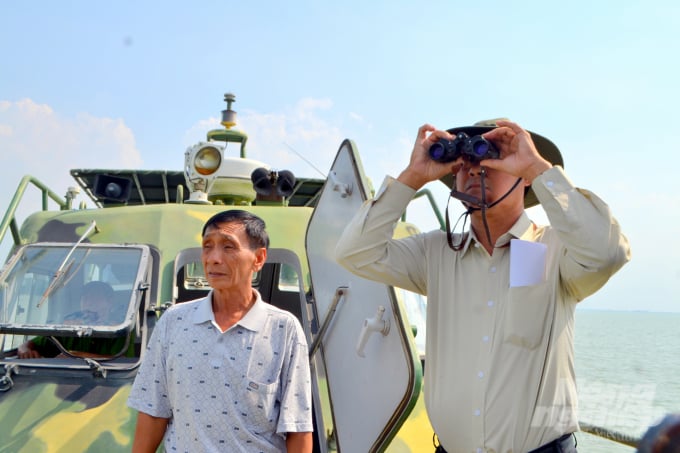
Leaders of Tay Ninh province inspected planted forests in the semi-flooded area of Dau Tieng Lake. Photo: Tran Trung.
The majority of trees are planted in traffic corridors, along canals, ditches, forest banks, checkpoints, forest protection stations, and on the grounds of headquarters, agencies, businesses, and military bases, among other locations. In addition to the allocated seedlings, various organizations, individuals, and enterprises sow approximately 500,000 additional seedlings of various species. This is a program with which people intensely concur and react.
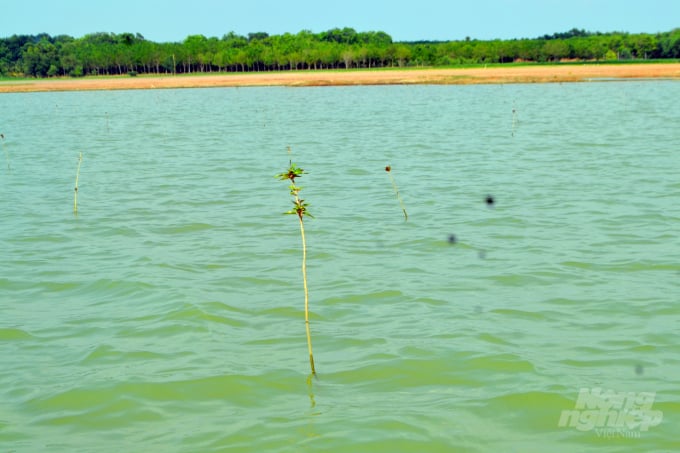
Yellow cheesewood is grown in the semi-flooded area of Dau Tieng Lake. Photo: Tran Trung.
Nguyen Dinh Xuan, Director of Tay Ninh Department of Agriculture and Rural Development, stated that the objective of the Government's project to plant 1 billion trees is for the entire country to plant 1 billion trees by the end of 2025, 690 million scattered trees in urban and rural areas, 310 million trees concentrated in protection forests, special-use forests, and new production forests (average planting 138 million trees/year) to contribute to environmental protection.
Translated by Linh Linh
/2025/06/17/3942-2-143243_548.jpg)
(VAN) Recently, in Sweden, the Secretary of the Binh Dinh Provincial Party Committee presented the Investment Registration Certificate for the 'Polyester Fabric Recycling Complex' project to SYRE Impact-AB Company.
/2025/06/12/3721-2-202745_83.jpg)
(VAN) TH made an impression at Seoul Food 2025 with its line of natural beverages, paving the way for Vietnamese food products to enter the South Korean market.

(VAN) Soc Trang's success in rice exports stems from a strategy of developing fragrant and specialty rice cultivation areas and standardizing production toward low-emission practices.
/2025/06/11/1311-5-120811_839.jpg)
(VAN) The pig farming industry is facing the challenge of comprehensive restructuring to meet requirements for quality, safety, traceability, and market expansion both domestically and for export.

(VAN) Vietnam considers participating in ALGROALBA in order to expand agricultural production, coordinate the assessment and effective exploitation potential land.
/2025/06/05/5314-1-184727_407.jpg)
(VAN) From seemingly worthless fish scales and skin, enzymes and lactic ferments can transform by-products into peptides, opening a sustainable, effective business direction and elevating Vietnamese seafood.

(VAN) TTC AgriS and IFC signed a strategic partnership to develop a sustainable agricultural value chain, aiming to achieve the Net Zero target by 2035.